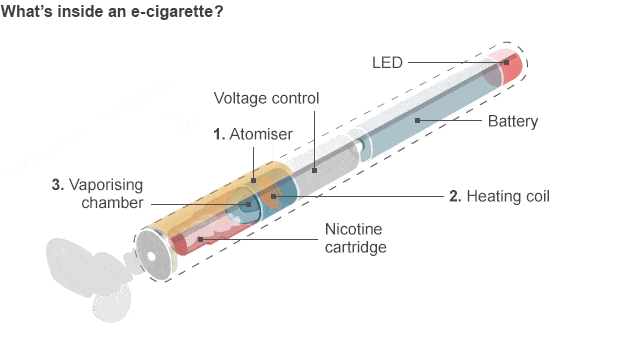Electronic cigarettes have increasingly grown in popularity, being marketed as an alternative to smoking tobacco, which contains much more toxic chemicals, and as a means to help smokers put the pipe down for good. There’s been a lot of debate surrounding the health risks following e-cigs use, some voices claiming these do little to help people quite smoking and that they’ve actually become part of the tobacco industry’s ploy to attract children to regular, tobacco cigarettes. A new meta-study that examined 81 e-cigarette studies found that these are less harmful than conventional cigarettes, and that their introduction reduces the number of tobacco-related deaths. The long term effects of e-cigarette use are, however, largely unknown.
[READ] Just a single cigarette has extremely harmful effects
Even so, the World Health Organization and national authorities are considering policies to restrict their sales, advertising and use given the absence of evidence that they help smokers quit, and the way they are being exploited by the tobacco industry to target children. Prof Peter Hajek, of Queen Mary University in London is one of the authors of the present study, part of an international team of researchers. He and colleagues found that the risks to users and passive bystanders are far less than those posed by cigarette smoke and that while electronic cigarettes contain a few of the toxins seen in tobacco smoke, these are seen at much lower levels. Furthermore, they found no evidence that children move from experimenting with e-cigarettes to regular use.
“This is not the final list of risks, others may emerge”, he said speaking for the BBC.
“But regulators need to be mindful of crippling the e-cigarette market and by doing so failing to give smokers access to these safer products that could save their lives.
“If harsh regulations are put in place now, we will damage public health on a big scale.”

A cigarette has 4,000 plus chemicals and a portion of those have been validated has being cancer causing. E-cigarettes, in contrast, typically contain three substances: flavor, nicotine, and glycol/vegetable glycerine. A review published in the journal Circulation, however, found e-cigs deliver high levels of nanoparticles, the researchers found, which can trigger inflammation and have been linked to asthma, stroke, heart disease, and diabetes.
At least 1 in 5 smokers has tried e-cigarettes, as have 10 percent of U.S. high school students, according to the U.S. Centers for Disease Control and Prevention. No longer a niche products, e-cigs are growing fast and comprise a multi-billion dollar market.
Whatever’s the case, the debate is far from over. On one side we have those who support e-cigs, citing they help reduce tobacco consumption, and the other we have voices who are very skeptical of their benefits and call for immediate regulation. The findings appeared in the journal Addiction.


